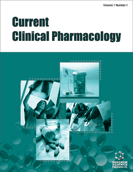Abstract
Background: Retigabine is an antiepileptic drug that reduces neuronal excitability by enhancing potassium channel activity.
Methods: This manuscript summarizes the pharmacokinetic and biopharmaceutical properties of retigabine collated from published and unpublished in vitro and clinical phase I–III studies in healthy volunteers or patients with partial-onset seizures.
Results: Retigabine is rapidly absorbed with a median time to Cmax of 0.5–2.0 hours. Thereafter, plasma concentrations decline in a mono-exponential manner, with a median half-life of 6–8 hours. The absolute oral bioavailability of retigabine is ~60%. Retigabine is metabolized extensively by N-acetylation and subsequent N-glucuronidation. In vitro and in vivo studies have shown that the drug-interaction potential of retigabine is low. The pharmacokinetics of retigabine are linear over the dose range 200–400mg three times daily (tid), with ~ 35–50% between-subject variability. Systemic exposure was not affected by a high fat meal, but Cmax was, ~14% and ~38% higher in the fed versus fasted state for the 200 and 400mg tablets, respectively. Retigabine drug-related material is primarily eliminated renally with unchanged retigabine accounting for ~36%. Retigabine plasma clearance decreased as severity of renal or hepatic impairment increased. Systemic exposure to retigabine is unaffected by gender when normalized for body weight. In elderly patients, retigabine systemic exposure was higher, and half-life was longer than in younger patients.
Conclusions: Retigabine should be administered tid without regard to food. No adjustments required for gender, race, or genetic/polymorphisms. Dosage adjustments are recommended in elderly patients and those with moderate and severe renal or moderate hepatic impairment.
Keywords: Antiepileptic drug, biopharmaceutical properties, epilepsy, ezogabine, pharmacokinetics, retigabine.
Current Clinical Pharmacology
Title:Clinical Pharmacokinetics of Retigabine/Ezogabine
Volume: 8 Issue: 4
Author(s): Debra J. Tompson and Christopher S. Crean
Affiliation:
Keywords: Antiepileptic drug, biopharmaceutical properties, epilepsy, ezogabine, pharmacokinetics, retigabine.
Abstract: Background: Retigabine is an antiepileptic drug that reduces neuronal excitability by enhancing potassium channel activity.
Methods: This manuscript summarizes the pharmacokinetic and biopharmaceutical properties of retigabine collated from published and unpublished in vitro and clinical phase I–III studies in healthy volunteers or patients with partial-onset seizures.
Results: Retigabine is rapidly absorbed with a median time to Cmax of 0.5–2.0 hours. Thereafter, plasma concentrations decline in a mono-exponential manner, with a median half-life of 6–8 hours. The absolute oral bioavailability of retigabine is ~60%. Retigabine is metabolized extensively by N-acetylation and subsequent N-glucuronidation. In vitro and in vivo studies have shown that the drug-interaction potential of retigabine is low. The pharmacokinetics of retigabine are linear over the dose range 200–400mg three times daily (tid), with ~ 35–50% between-subject variability. Systemic exposure was not affected by a high fat meal, but Cmax was, ~14% and ~38% higher in the fed versus fasted state for the 200 and 400mg tablets, respectively. Retigabine drug-related material is primarily eliminated renally with unchanged retigabine accounting for ~36%. Retigabine plasma clearance decreased as severity of renal or hepatic impairment increased. Systemic exposure to retigabine is unaffected by gender when normalized for body weight. In elderly patients, retigabine systemic exposure was higher, and half-life was longer than in younger patients.
Conclusions: Retigabine should be administered tid without regard to food. No adjustments required for gender, race, or genetic/polymorphisms. Dosage adjustments are recommended in elderly patients and those with moderate and severe renal or moderate hepatic impairment.
Export Options
About this article
Cite this article as:
Tompson J. Debra and Crean S. Christopher, Clinical Pharmacokinetics of Retigabine/Ezogabine, Current Clinical Pharmacology 2013; 8 (4) . https://dx.doi.org/10.2174/15748847113089990053
| DOI https://dx.doi.org/10.2174/15748847113089990053 |
Print ISSN 1574-8847 |
| Publisher Name Bentham Science Publisher |
Online ISSN 2212-3938 |
 73
73Related Articles
-
Scientific Prediction and Prophetic Patenting in Drug Discovery
Recent Patents on CNS Drug Discovery (Discontinued) Cerebral Hypoperfusion in Hereditary Coproporphyria (HCP): A Single Photon Emission Computed Tomography (SPECT) Study
Endocrine, Metabolic & Immune Disorders - Drug Targets Selenium Deficiency in Soils and Crops and its Impact on Animal and Human Health
Current Nutrition & Food Science Tyrosine Kinase Inhibitor as a new Therapy for Ischemic Stroke and other Neurologic Diseases: is there any Hope for a Better Outcome?
Current Neuropharmacology The Neurotachykinin NK1 Receptor – A Novel Target for Diagnostics and Therapy
Current Molecular Imaging (Discontinued) Autophagy Enhancer Carbamazepine Alleviates Memory Deficits and Cerebral Amyloid-β Pathology in a Mouse Model of Alzheimer's Disease
Current Alzheimer Research Preface [Hot Topic: Rational Drug Design and The Discovery of the 1,2,3-Triazolines as a Unique Class of Anticonvulsants and Antiischemic Agents (Guest Editor: Pankaja K. Kadaba)]
Current Medicinal Chemistry Rational Drug Development Using Gene-Targeted Agents and Their Application in Anti-Gene Radiotherapy
Current Genomics Diabetes Gene Therapy: Potential and Challenges
Current Gene Therapy Using Literature-based Discovery to Identify Novel Therapeutic Approaches
Cardiovascular & Hematological Agents in Medicinal Chemistry Metabolic Targeting of Cancers: From Molecular Mechanisms to Therapeutic Strategies
Current Medicinal Chemistry Huntingtons Disease: New Frontiers for Molecular and Cell Therapy
Current Drug Targets Role of Oxidative Stress in Polycystic Ovary Syndrome
Current Women`s Health Reviews Synthesis and Anticonvulsant Activity Evaluation of 4-butyl-5-(4- alkoxyphenyl)-2H-1,2,4-triazole-3(4H)-ones
Letters in Drug Design & Discovery β -Amyloid: A Disease Target or a Synaptic Regulator Affecting Age-Related Neurotransmitter Changes?
Current Pharmaceutical Design Homocysteine and Cerebral Stroke in Developing Countries
Current Medicinal Chemistry Anticonvulsant Activity and 5-HT1A/5-HT7 Receptors Affinity of Piperazine Derivatives of 3,3-Diphenyl- and 3,3-Dimethyl-succinimides
Letters in Drug Design & Discovery Novel Directions in Antipsychotic Target Identification using Gene Arrays
Current Drug Targets - CNS & Neurological Disorders Phentermine and Topiramate Extended-Release for the Obesity: New Kids on the Block
Recent Patents on Cardiovascular Drug Discovery In Silico Approaches Towards the Understanding of the Structure- Function Relationships in Metabotropic Glutamate Receptors (mGluRs) and other Family C GPRCs
Current Pharmaceutical Design






















